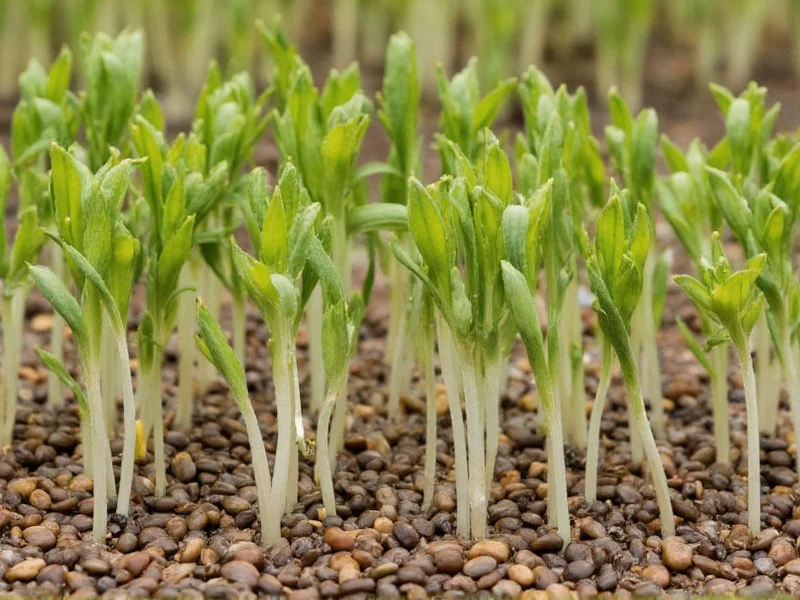The Science-Backed Benefits of Sprouted Lentils
Sprouted lentils offer significant nutritional advantages over their unsprouted counterparts. During the sprouting process, enzymatic activity breaks down phytic acid and other anti-nutrients that can inhibit mineral absorption. Research shows sprouted lentils contain up to 50% more vitamin C, increased levels of B vitamins, and improved protein quality with more essential amino acids.
One study published in the Journal of Food Science and Technology found that sprouting lentils for 72 hours increased their antioxidant capacity by 20-30% while reducing starch content. This makes sprouted lentils particularly beneficial for people with digestive sensitivities, as the sprouting process breaks down complex carbohydrates that can cause bloating.
Step-by-Step Guide to Sprouting Lentils at Home
Sprouting lentils requires minimal equipment and can be done in just a few simple steps. Whether you're using a dedicated sprouter or basic kitchen items, the process remains consistent.
Materials You'll Need
- Dried lentils (green, brown, or French varieties)
- Glass jar (quart-sized)
- Breathable cover (cheesecloth, sprouting lid, or clean mesh)
- Colander for rinsing
- Storage container for finished sprouts
The Sprouting Process Timeline
| Day | Process | What to Expect |
|---|---|---|
| Day 0 | Rinse ½ cup lentils, soak in 2-3 cups water for 2-4 hours | Lentils will double in size |
| Day 1 | Drain, rinse twice daily, keep at room temperature | Small tails begin to emerge |
| Day 2 | Continue rinsing twice daily | Tails grow to ¼ inch |
| Day 3-4 | Rinse, then refrigerate after final rinse | Full sprouts ready for consumption |
Best Lentil Varieties for Sprouting
Not all lentils sprout equally well. Understanding which types work best ensures successful sprouting every time.
Green and Brown Lentils: These common varieties sprout reliably with a mild, earthy flavor. They maintain their shape well during sprouting and offer the best balance of nutrition and texture.
French (Puy) Lentils: These smaller, speckled lentils produce delicate sprouts with a slightly peppery flavor. They take 1-2 days longer to sprout than green lentils but offer excellent nutritional benefits.
Red Lentils: Avoid these for sprouting. Their split nature causes them to become mushy and disintegrate during the sprouting process. They're better suited for soups and purees.
Safety Considerations for Sprouting Lentils
Sprouts have been associated with foodborne illness outbreaks due to the warm, moist conditions required for sprouting—ideal for bacterial growth. Follow these evidence-based safety practices:
- Always use food-grade lentils specifically labeled for sprouting or consumption
- Maintain strict hygiene: wash hands thoroughly before handling sprouts
- Rinse sprouts with clean, cool water at least twice daily
- Store finished sprouts in the refrigerator below 40°F (4°C)
- Consume within 5 days of completion
- People with compromised immune systems should cook sprouts before eating
The FDA recommends cooking sprouts thoroughly to eliminate potential pathogens, especially for children, elderly individuals, pregnant women, and those with weakened immune systems.
Culinary Uses for Sprouted Lentils
Sprouted lentils offer culinary versatility beyond regular lentils. Their enhanced digestibility and milder flavor profile make them suitable for both cooked and raw applications.
Raw Applications: Add to salads, wraps, and sandwiches for a nutrient boost. The sprouts provide a satisfying crunch and mild flavor that complements fresh vegetables.
Cooked Dishes: Use in soups, stews, and curries. Sprouted lentils cook 25-30% faster than unsprouted varieties, requiring only 15-20 minutes of simmering.
Sprouted Lentil Hummus: Blend 2 cups sprouted lentils with 2 tablespoons tahini, 1 clove garlic, juice of 1 lemon, and 3-4 tablespoons olive oil for a protein-rich dip with improved digestibility.
Troubleshooting Common Sprouting Issues
Even experienced sprouters encounter challenges. Here's how to address common problems:
- Mold development: Indicates insufficient rinsing or poor air circulation. Increase rinse frequency and ensure proper drainage.
- Foul odor: Sign of bacterial growth. Discard the batch and sterilize your equipment before trying again.
- Slow or no sprouting: Could indicate old lentils or water temperature that's too cold. Use fresher lentils and maintain room temperature (68-75°F).
- Excessive root growth: Lentils have sprouted too long. Refrigerate immediately and use within 24 hours.
Storage Tips for Maximum Freshness
Proper storage extends the shelf life of your sprouted lentils while maintaining nutritional value:
- After final rinse on day 3-4, drain thoroughly before refrigerating
- Store in an airtight container with a paper towel to absorb excess moisture
- Ideal storage temperature is 34-38°F (1-3°C)
- Consume within 5 days for best quality and safety
- For longer storage, freeze sprouted lentils after blanching for 1 minute











 浙公网安备
33010002000092号
浙公网安备
33010002000092号 浙B2-20120091-4
浙B2-20120091-4